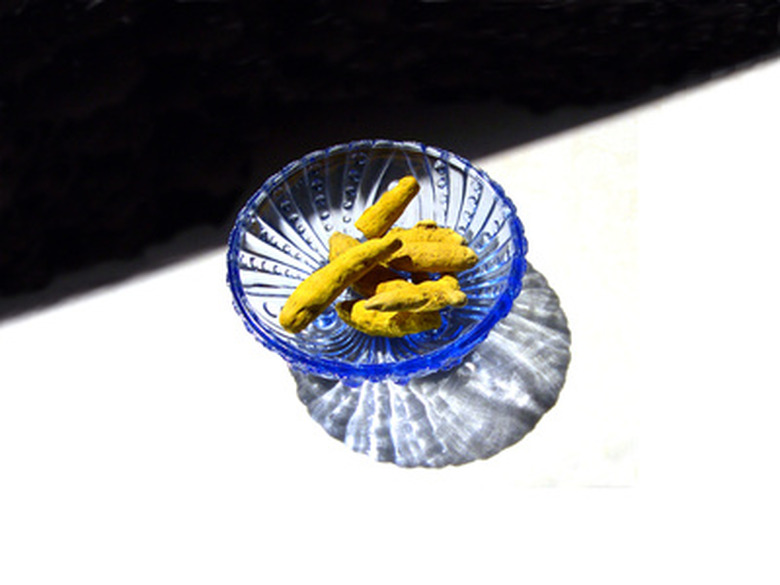How To Plant Turmeric In Michigan
Things Needed
- Turmeric roots or rhizomes
- Potting soil
- Pots
- Spade
- Plastic bags
Turmeric is a valuable and rare tuberous plant used in Indian cooking. It provides a unique flavor to many dishes but can be difficult to grow in cold climates such as that of Michigan. It is a subtropical plant, so a turmeric in Michigan will have to be started indoors in a greenhouse-like setting. Turmeric can be put outdoors during the warmest part of the summer but is unlikely to reach the size and yield of one grown in natural hothouse climates.
Step 1
Plant the roots in sterile, well-drained potting soil in appropriate pots. Plant the roots at least 2 inches deep in separate pots or at least 6 inches apart in larger containers. Plant in the spring, as you won't be setting them out until much later in the Michigan summer.
- Turmeric is a valuable and rare tuberous plant used in Indian cooking.
- It provides a unique flavor to many dishes but can be difficult to grow in cold climates such as that of Michigan.
Step 2
Keep the plants in a sunny, warm location, such as a conservatory or greenhouse; a full-sun spot is good, but don't put it where it will get a chill from drafts, windows or doors.
Step 3
Set the plants outside when it is warm enough, usually June or July in the northern half of the state, while southern Michigan gardeners might get away with putting turmeric out as early as May. Set the plants out when temperatures are reliably warm, with no danger of frost. Keep them in containers outside or transplant into the ground when shoots are at least 4 to 6 inches tall.
Step 4
Water turmeric during the growing season to keep the soil moist, not soggy, especially if the plants are in pots year-round. Water when the leaves begin to droop to avoid wilting and, for container plants, until water runs out of the pot's drainage holes.
Step 5
Harvest in the fall before the first frost. Dig up the plants when the leaves begin to die back in September. Be careful not to damage the roots. Shake off the dirt from the roots. Wash them off by swishing them in a bucket of water. Allow the roots to dry before storage or use.
- Keep the plants in a sunny, warm location, such as a conservatory or greenhouse; a full-sun spot is good, but don't put it where it will get a chill from drafts, windows or doors.
Step 6
Store the turmeric in a cool, dry place such a garage or basement in clear plastic bags, ventilated with air holes. Replant these plants in the spring.
Tip
Find fresh turmeric roots. These often can be found at Asian or Indian grocery stores, or through seed catalogs. Look for plump roots with plenty of eyes just beginning to sprout.
Warning
Watch for slugs, as these are the most common problem for turmeric plants.
